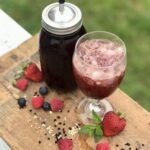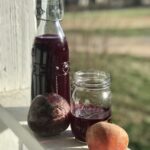Sweet and sour notes blend beautifully to awaken the tastebuds in this Citrus & Pine Winter Shrub. Perfect to toast the shortest day of the year, the Winter Solstice, and bring in some citrus sunshine. Set off with warming notes of ginger, pine, cinnamon, and clove, this probiotic-rich beverage is perfect to serve at your next gathering as a zero-proof cocktail or drizzle on a snow cone for the kids at the first snowfall.
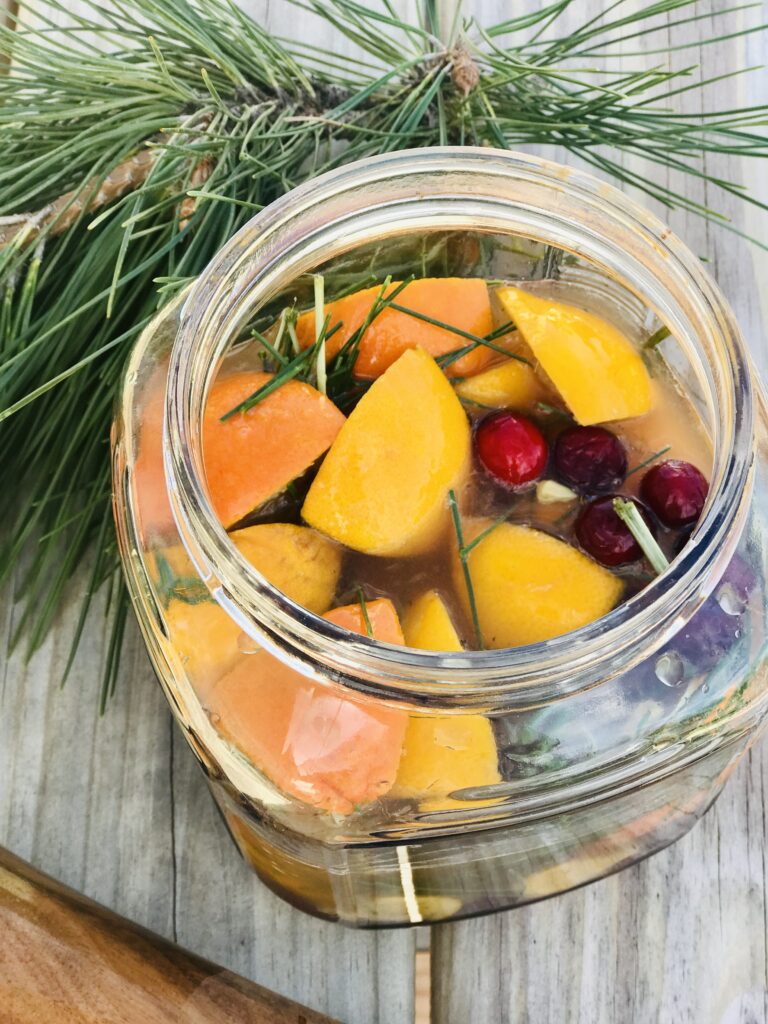
Citrus & Pine Winter Shrub
No, I am not talking about a holly bush or a dwarf pine. I am referring to a drink originating from 17th Century England and later brought to Colonial America, where apple cider vinegar and sugar were used as a way of preserving seasonal fruit to be enjoyed out of season. What results is a fruity, sweet-tart syrup to add to fizzy, sparkling water. There are many variations to this recipe as you can use whatever fruit is in season. Check out my Summer Sunshine Shrub for a summer version. Ultimately, this particular recipe combines all my favorite winter flavors for a fun and nutritious way to ring in the winter season by adding a bit of “special” to your Winter Solstice Tradition or any other holiday gathering.
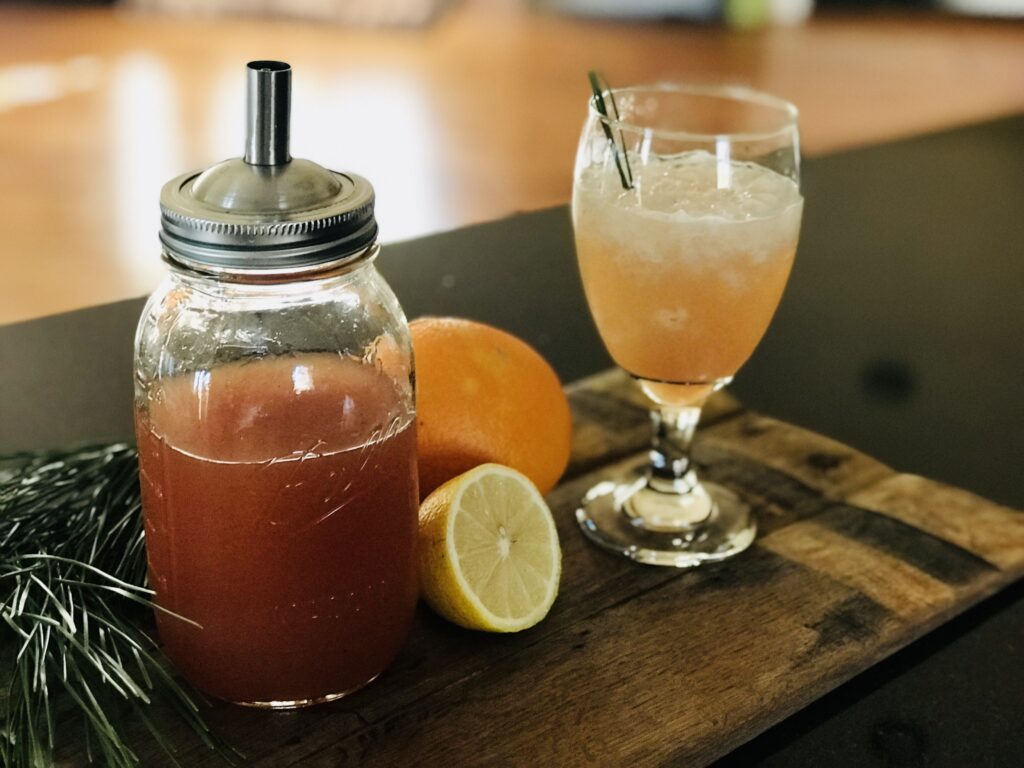
Foraging for White Pine with Herb Fairies
As I am continuing my third year in the Herbal Academy, I found a way for my children to learn about herbs alongside me in a way that inspired their creativity and drew them outdoors. Learning Herbs has an amazing program called Herb Fairies, a collection of thirteen storybooks that lead children on an adventure into discovering the healing properties of herbs. Each tiny booklet focuses on one herb and includes recipes, activities, as well as the practical application of each herb. Since the connected stories lead them through the seasons, no matter what season we are in, there are always healing adventures to be had. One of our favorites is Book 10, The Root of Kindness because we love working with White Pine.
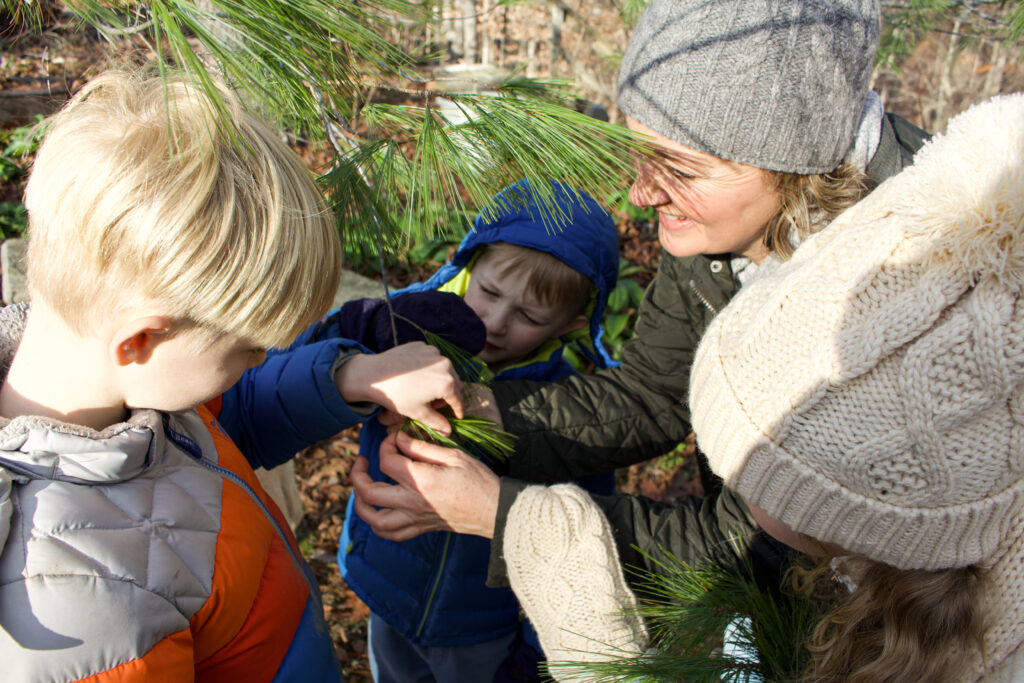

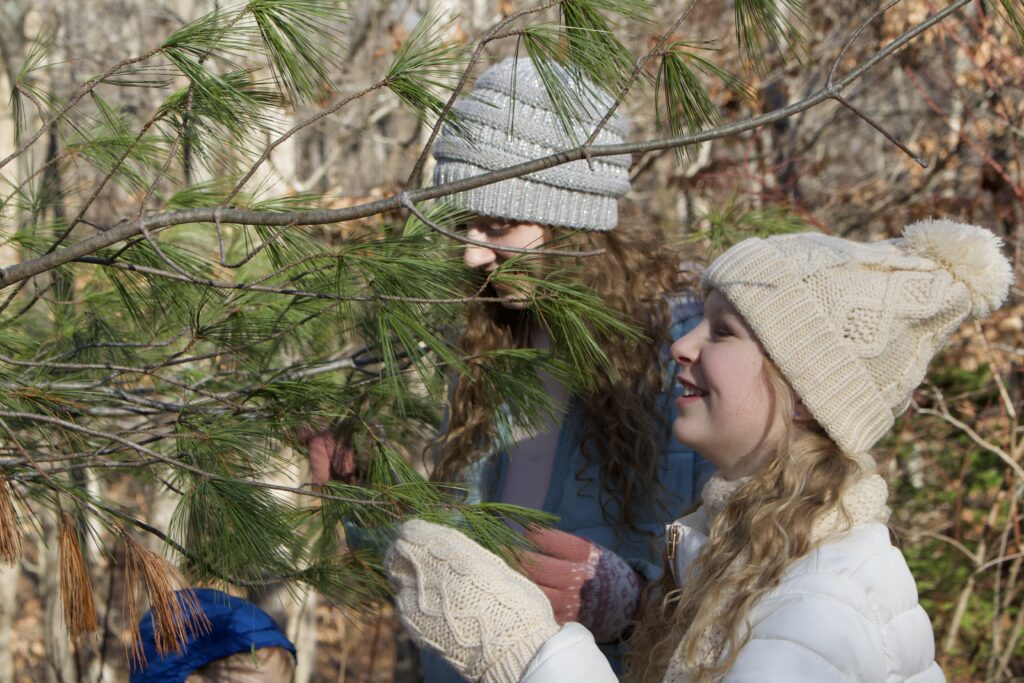
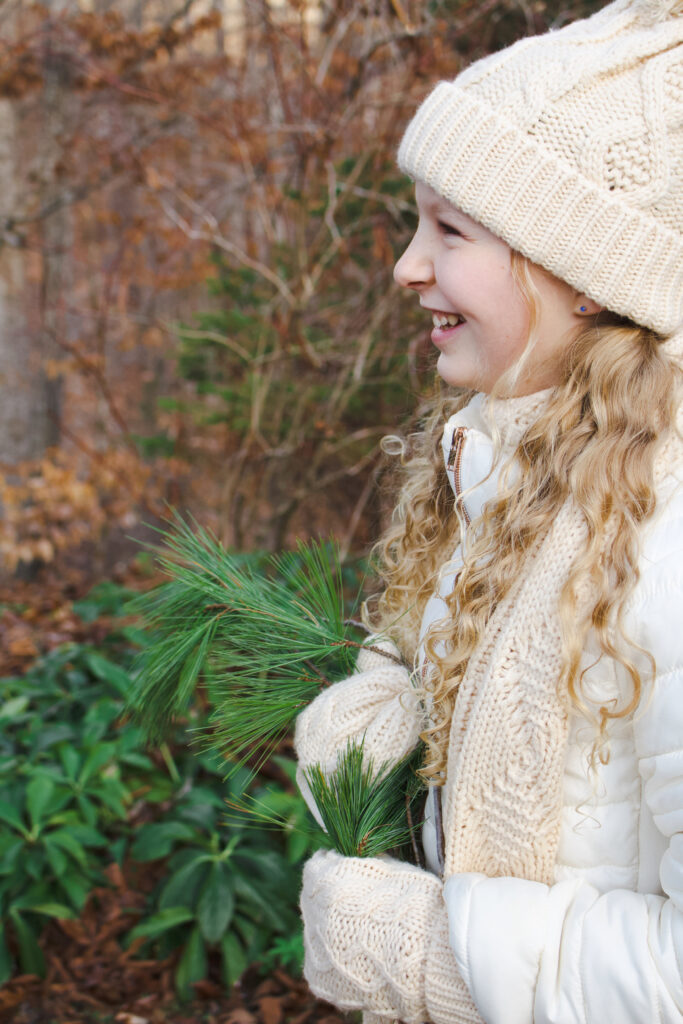
White Pine can be found year-round but is particularly fun to work with in the winter when vitamin C is helpful to boost the immune system. Pine boasts five times the concentration of Vitamin C found in lemons and has warm and dry energetics that are great for calming coughs, nourishing the body, and bringing strength just like the Great White Pine. It is safe to use any “true” pine if you can’t find white pine.
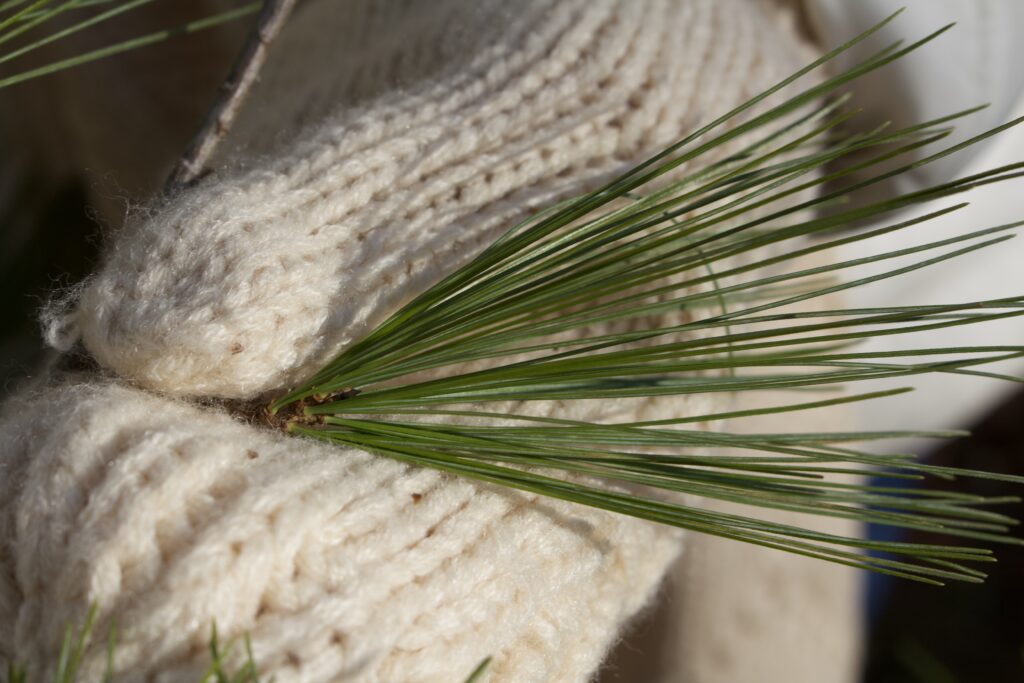
*To tell a pine apart from its conifer cousin, you need to look at the needles. True pine needles grow in bundles, called fascicles. An Eastern White Pine has a fascicle bundle of 5. They are soft to the touch. It is fun to identify a pine tree by the number of fascicles you count. For instance, a Red Pine has a fascicle of 3 needles, and a Ponderosa Pine has fascicles of 2-3 needles.
Ingredients for Citrus & Pine Winter Shrub:
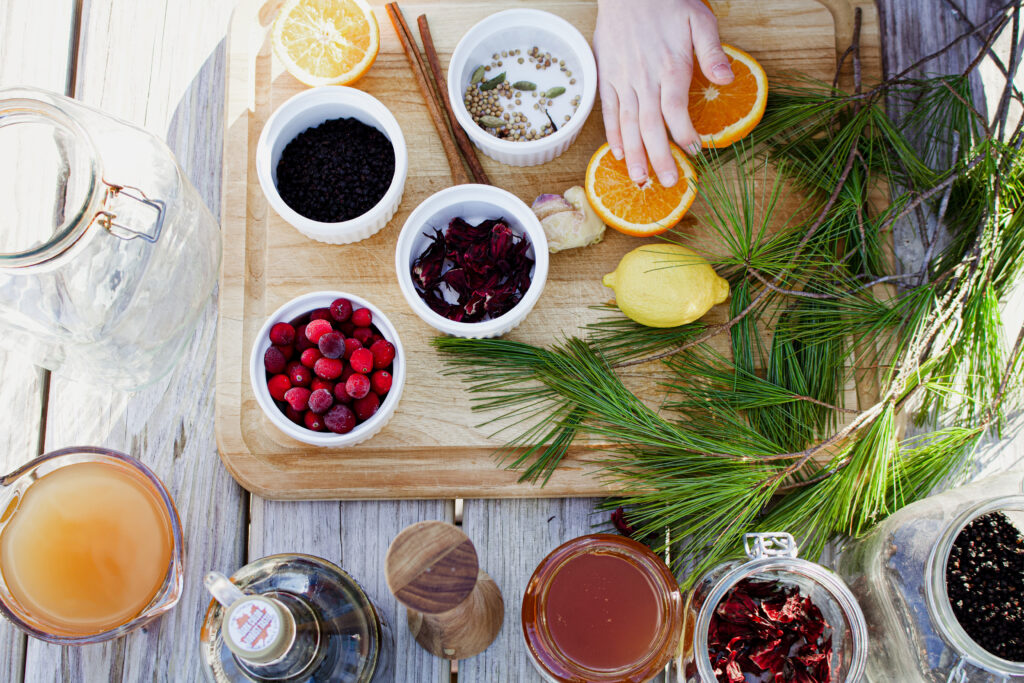
- 2 large organic oranges, skin on, quartered
- 1 organic Meyer lemon, skin on, quartered
- 1/2 cup fresh or frozen cranberries
- ½ cup chopped white pine or other “true” pine needles and small twigs*
- 1-inch fresh ginger peeled and chopped or minced
- 1 lemongrass stalk coarsely chopped or 2 tsp coriander seed (optional)
- 1/4 cup dried elderberries (optional)
- 1/4 cup dried hibiscus flower (optional)
- 2 cinnamon sticks
- 5 cloves
- 3 cardamom pods
- 2 cups apple cider vinegar
- 1 cup raw honey
- 1/4 cup pure maple syrup
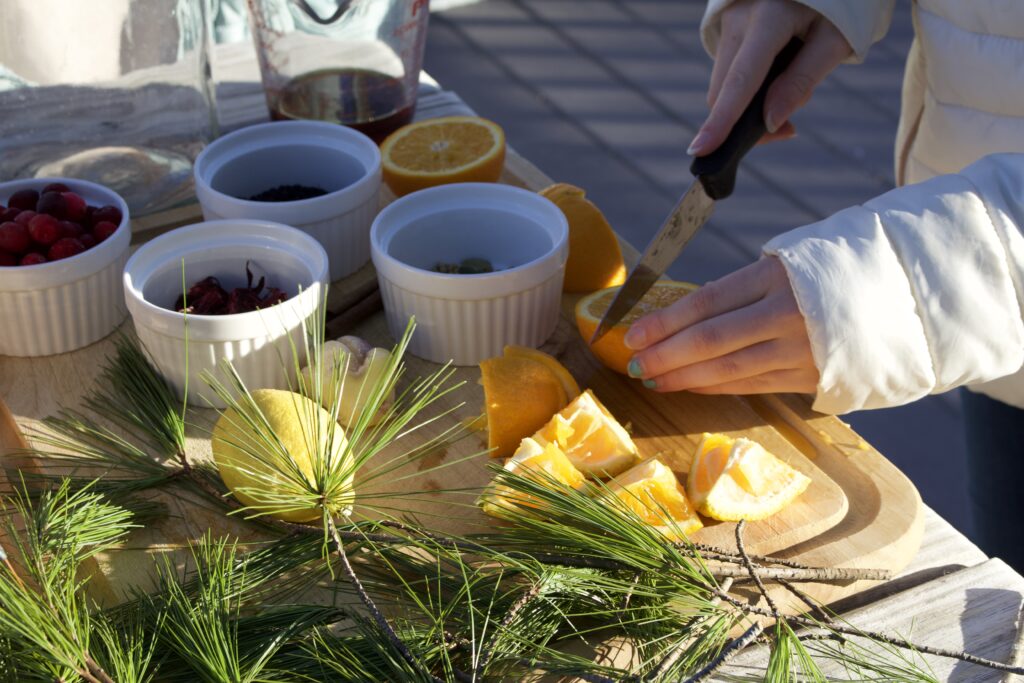
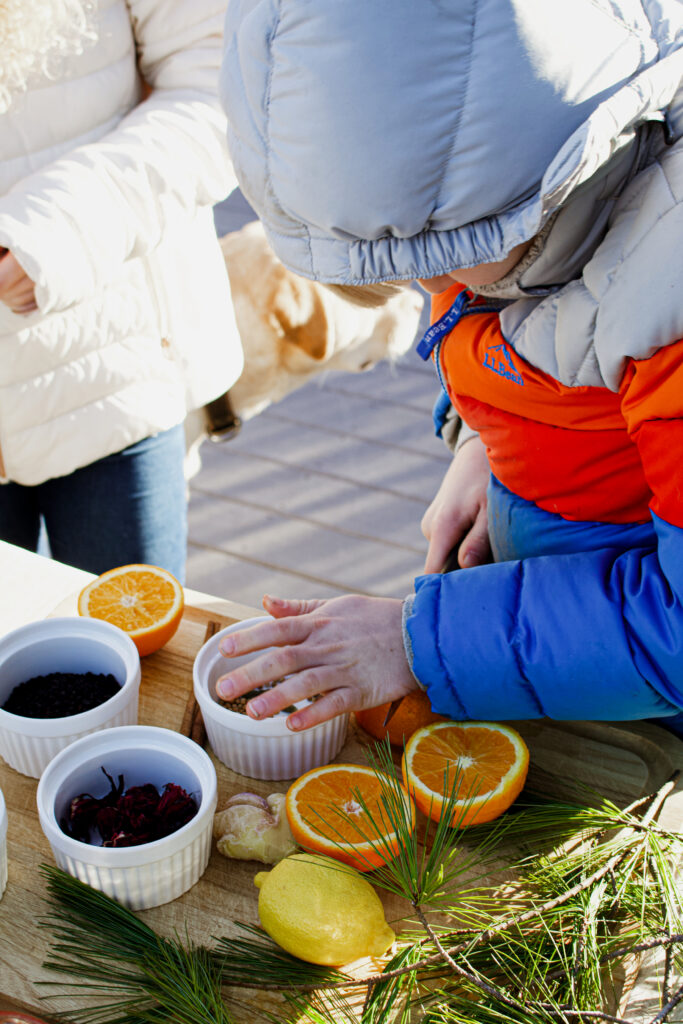
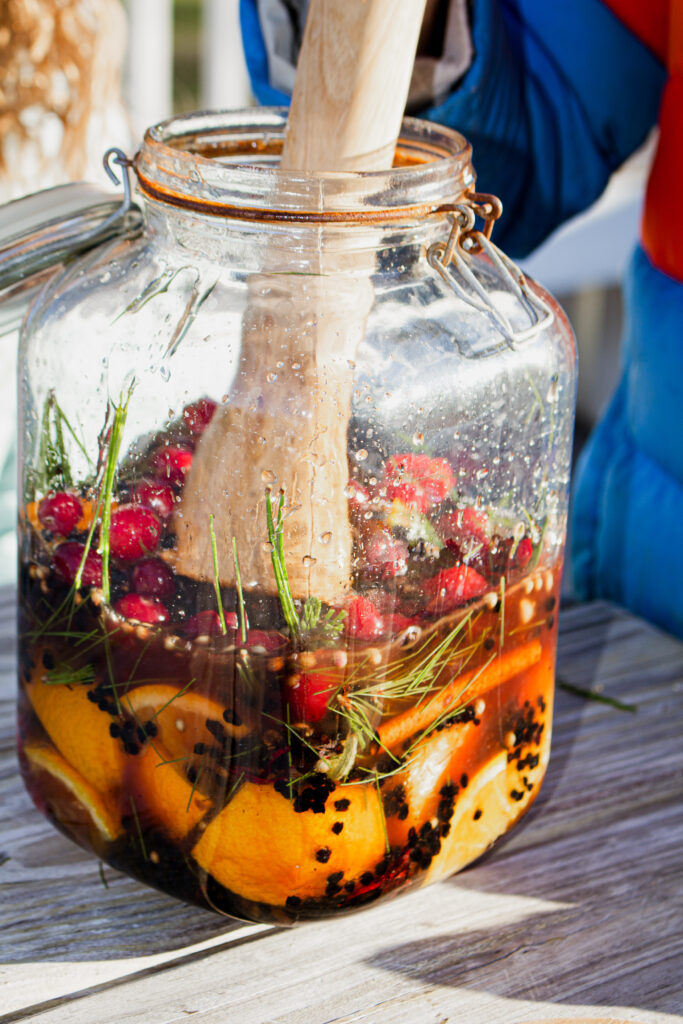
Method:
- In a clean 1/2 gallon jar or jug, add quartered oranges, lemons, and cranberries
- Pound or muddle with the back of a spoon or sauerkraut pounder to release juices
- Add chopped pine and twigs, ginger, lemongrass or coriander, elderberries (if using), hibiscus (if using), cinnamon sticks, cardamom pods, and cloves.
- Add honey, maple syrup, and apple cider vinegar. Stir to dissolve honey.
- Cover with a plastic lid or line a metal lid with wax paper, and place in the refrigerator for 10 days. Alternatively, you can ferment on the counter for 3 days, with 2 days in the refrigerator, shaking daily, until flavors meld, probiotics multiply, and everything gets yummialized.
- After the infusing period is complete, strain your shrub through a fine mesh strainer, firmly pressing and squeezing out all the juice. Transfer to a clean, dry jar or bottle, place a fun lid on it for easy dispensing, and label clearly.
- Serve with crushed ice, ¼ cup shrub, and fizzy water or for a special winter treat, drizzle over freshly fallen snow in a snow cone (white snow only).
Fifteen minutes of active time, not including foraging. Ten days total fermenting time if placed directly in the refrigerator. Three days fermenting time if placed on the counter, with an additional two days in the refrigerator. Yields three cups of syrup.
Citrus & Pine Winter Shrub
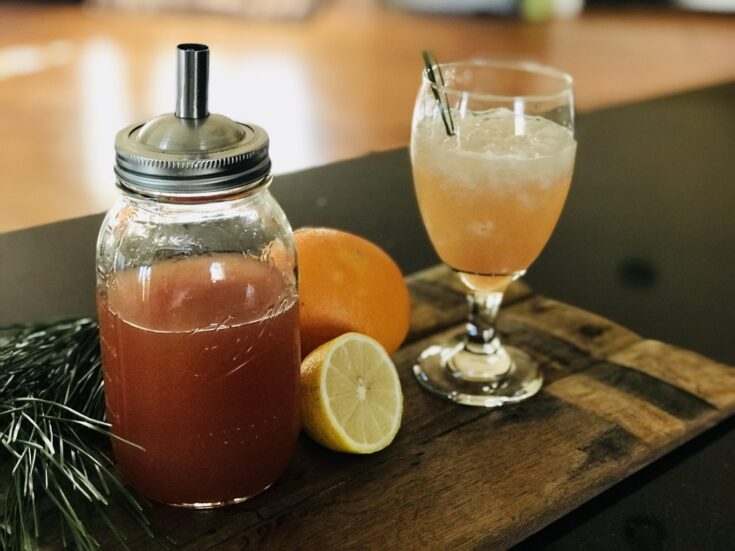
Sweet and sour notes blend beautifully to awaken the tastebuds in this Citrus & Pine Winter Shrub. Perfect to toast the shortest day of the year, the Winter Solstice, and bring in some citrus sunshine. Set off with warming notes of ginger, pine, cinnamon, and clove, this probiotic-rich beverage is perfect to serve at your next gathering as a zero-proof cocktail or drizzle on a snow cone for the kids at the first snowfall.
Ingredients
- 2 organic oranges quartered
- 1 organic Meyer lemon quartered
- 1/2 cup fresh cranberries
- 1/2 cup chopped fresh white pine needles and small twigs
- 1 inch knob fresh ginger grated
- 2 whole cinnamon sticks
- 5 whole cloves
- 1/4 cup dried elderberries (optional)
- 1 stalk lemongrass chopped (optional)
- 2 cups organic raw apple cider vinegar
- 1 cup raw honey
- 1/4 cup pure maple syrup (if you like a sweeter shrub)
Instructions
1. Wash and quarter the oranges and lemon. Do not peel.
2. Add all ingredients into a half-gallon jar with a screw top lid or clamp lid.
3. With a wooden spoon or sauerkraut pounder, press firmly to mash and release the juices.
4. Cover with a plastic lid or line a metal lid with waxed or parchment paper. Set out on the counter for 3 days, then transfer to the refrigerator for another 2 days. Or place it in the refrigerator for 10 days total.
5. After the infusing period, strain the solids through a fine-mesh strainer, pressing out any remaining shrub from the solids. Compost or discard the solids.
6. Transfer to a clean quart-sized jar with a lid and store in the refrigerator for up to 6 months.
7. To use, fill a glass 1/2 full with crushed ice. Add 1 T- 1/4 cup shrub (depending on your taste). Fill the remaining glass with sparkling water such as Pellegrino and enjoy.
8. This can also be used as a snowcone syrup on freshly fallen snow (use only the white snow).
Citrus & Pine Winter Shrub Snow Cones For the Kids
Do you ever just crave a snow cone? Me either. But my kids ask if they can make snow cones every time it snows. As long as they collect the fresh fallen “white” snow and steer clear of the yellow, I am game.
Citrus & Pine Winter Shrub is the perfect snow cone syrup to go on their snow cones. Without all the colored dyes and chemically-laden, highly processed sugars, Citrus & Pine Winter Shrub not only tastes amazing, but boasts healthy probiotics to boot. It’s a great way to get probiotics into their little bellies in a tasty way.
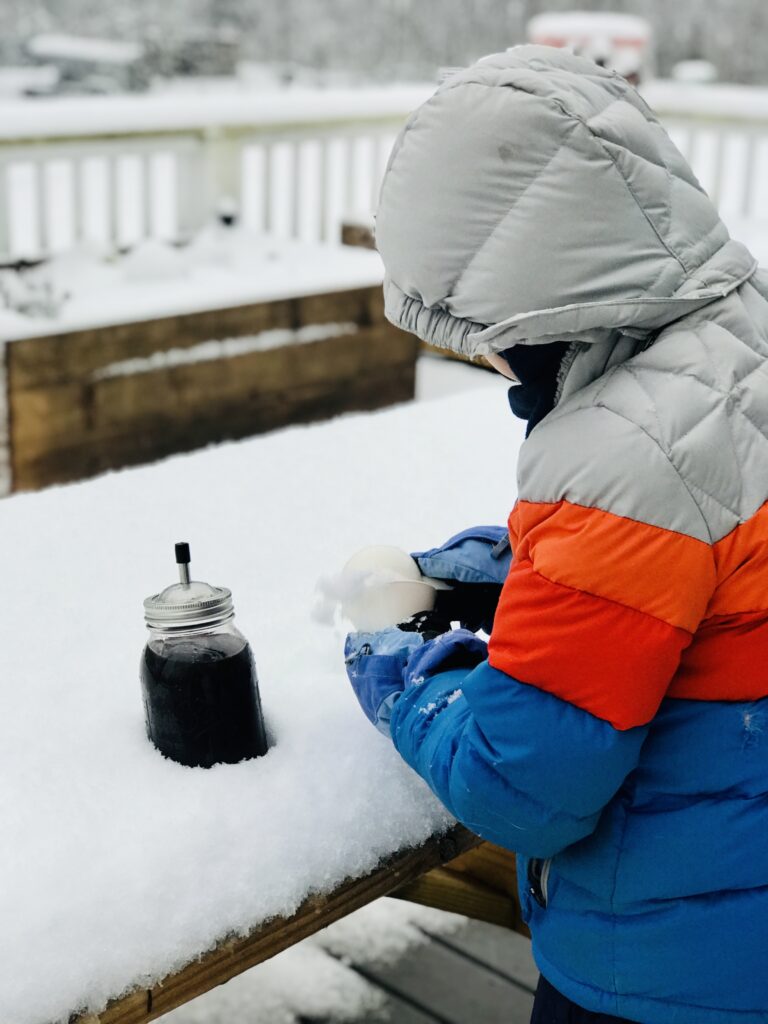
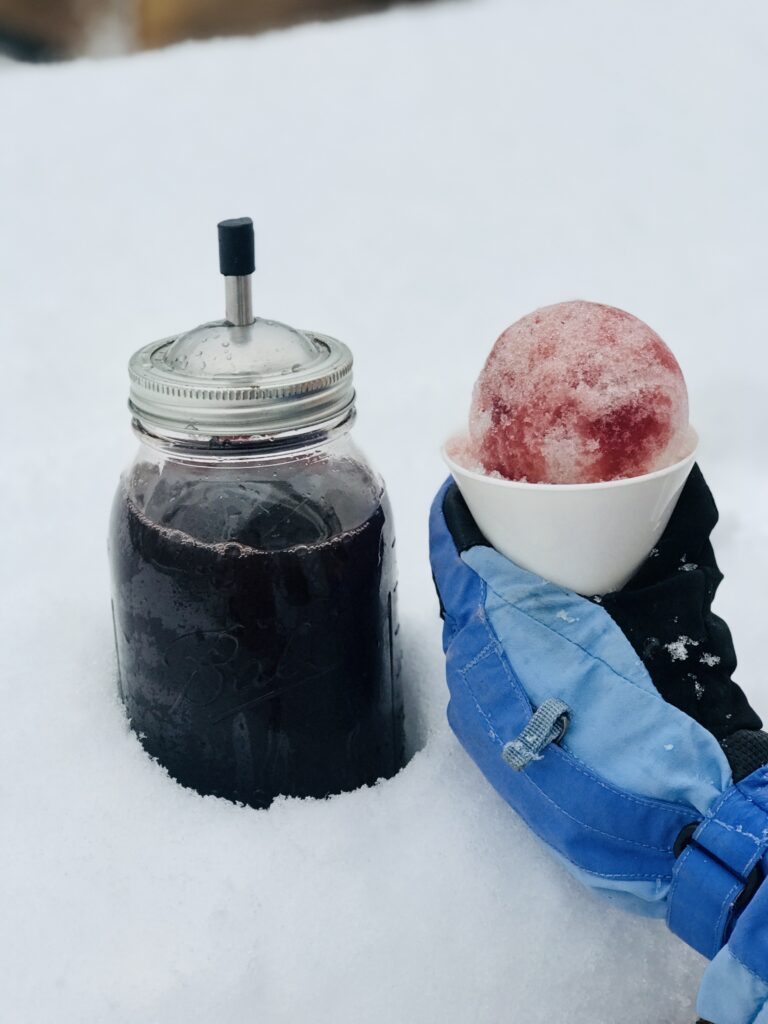
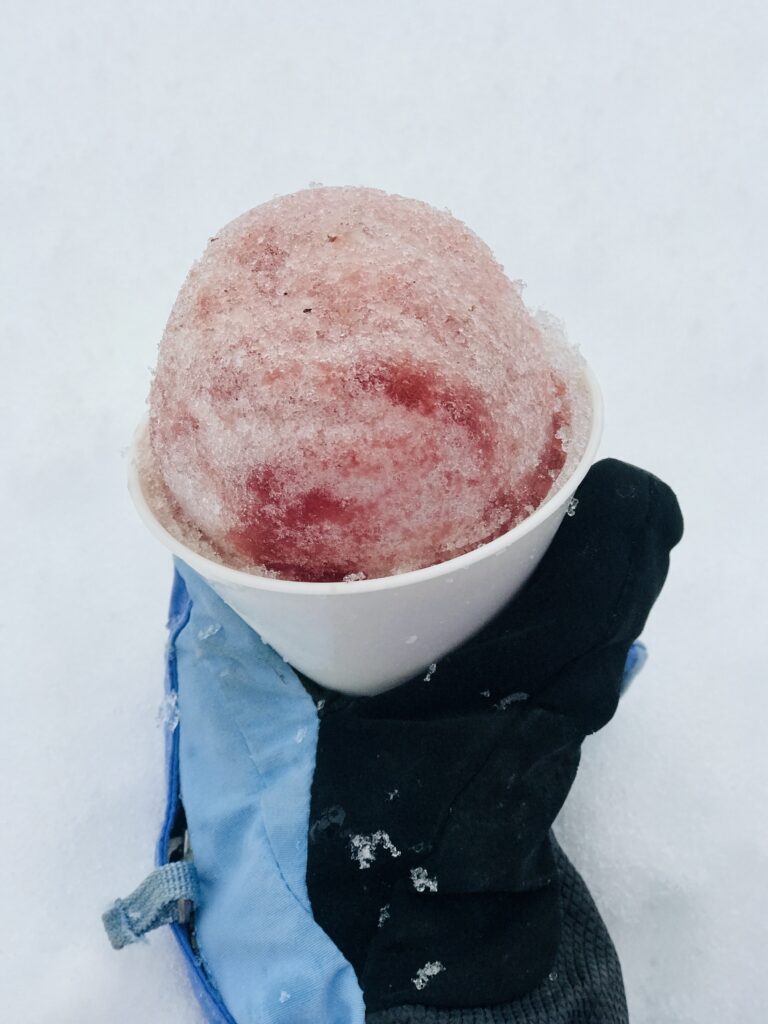
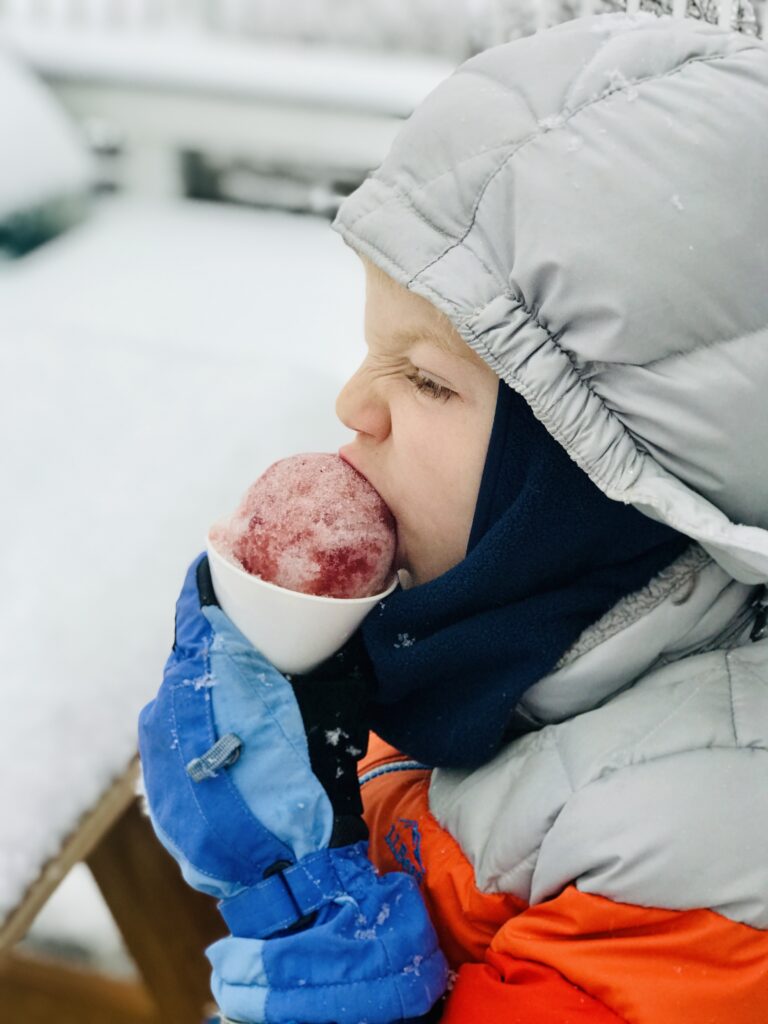
Check Out my Youtube Post on Summer Sunshine Shrub for a Tutorial
Although the Citrus & Pine Winter Shrub has different ingredients, the Summer Sunshine Shrub uses the same basic elements of fruit, herbs, spices, apple cider vinegar, and honey. If you would like a video tutorial, for all my visual learners, this video on Summer Sunshine Shrub on YouTube will be helpful.
Shop This Post
Herbal Adventures for Kids (a wonderful herbal introduction book for kids. This recipe is adapted from one I found in this book.)
1/2 gallon wide mouth mason jar
Mason jar lids with pour spouts
If you want a great book to introduce your children to the concept of the microbiome, healthy bacteria, the importance of eating nutritious food, and the role that probiotics and prebiotics play in our health, then The Army Inside You: A Children’s Guide to the Microbiome by Lindsey Garvin is a great book. Not only are the illustrations adorable and the concepts easy to grasp, but it gives children ownership of what they put in their mouth. They make healthy choices because they understand and know the “why” of their choices. Knowledge empowers!
Check Out These Related Posts:
Pin For Later
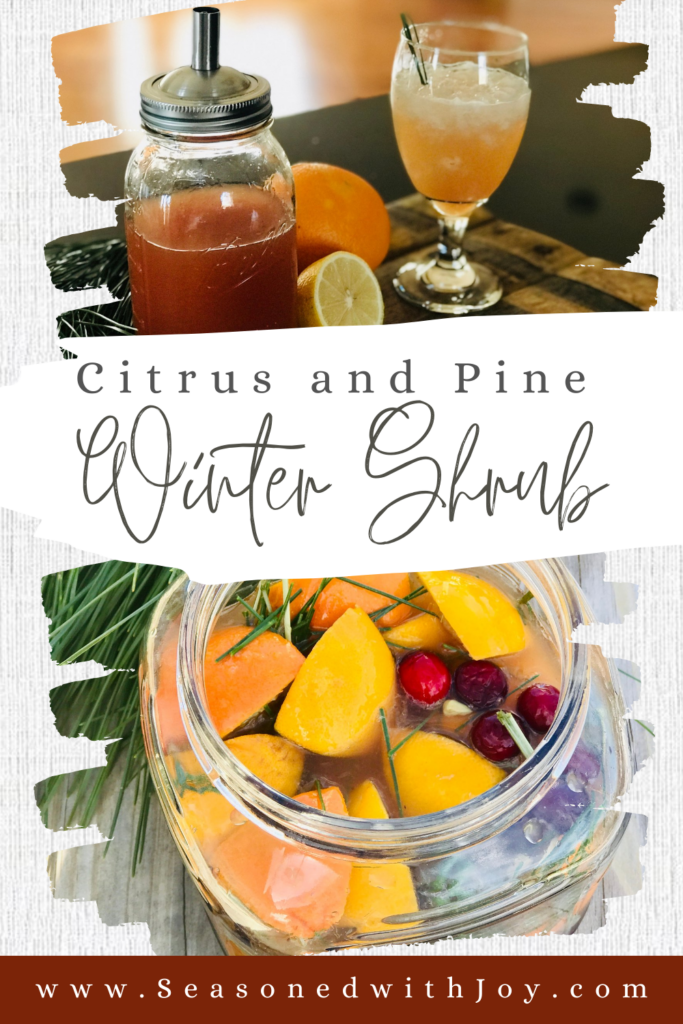
In everything you do -eat, play, and, love- may it always be Seasoned with Joy!
This post contains affiliate links, which means I make a small commission at no extra cost to you. Unless stated otherwise, I will only recommend products I personally enJOY. See my full disclosure here.


